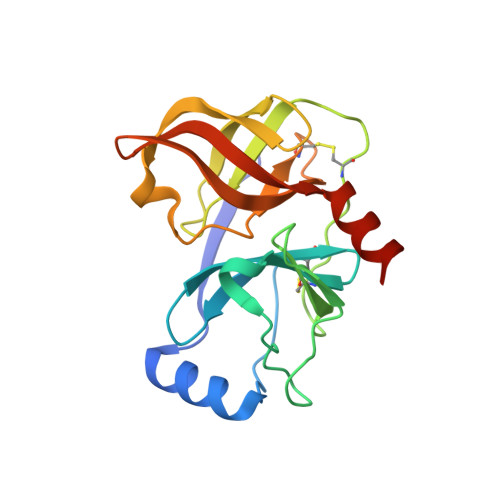Molecular Mechanism by Which a Potent Hepatitis C Virus NS3-NS4A Protease Inhibitor Overcomes Emergence of Resistance.
O'Meara, J.A., Lemke, C.T., Godbout, C., Kukolj, G., Lagace, L., Moreau, B., Thibeault, D., White, P.W., Llinas-Brunet, M.(2013) J Biol Chem 288: 5673-5681
- PubMed: 23271737
- DOI: https://doi.org/10.1074/jbc.M112.439455
- Primary Citation of Related Structures:
4I31, 4I32, 4I33 - PubMed Abstract:
Although optimizing the resistance profile of an inhibitor can be challenging, it is potentially important for improving the long term effectiveness of antiviral therapy. This work describes our rational approach toward the identification of a macrocyclic acylsulfonamide that is a potent inhibitor of the NS3-NS4A proteases of all hepatitis C virus genotypes and of a panel of genotype 1-resistant variants. The enhanced potency of this compound versus variants D168V and R155K facilitated x-ray determination of the inhibitor-variant complexes. In turn, these structural studies revealed a complex molecular basis of resistance and rationalized how such compounds are able to circumvent these mechanisms.
Organizational Affiliation:
Boehringer Ingelheim (Canada) Limited, Research and Development, Laval, Quebec H7S 2G5, Canada. RESGeneral.lav@boehringer-ingelheim.com

















